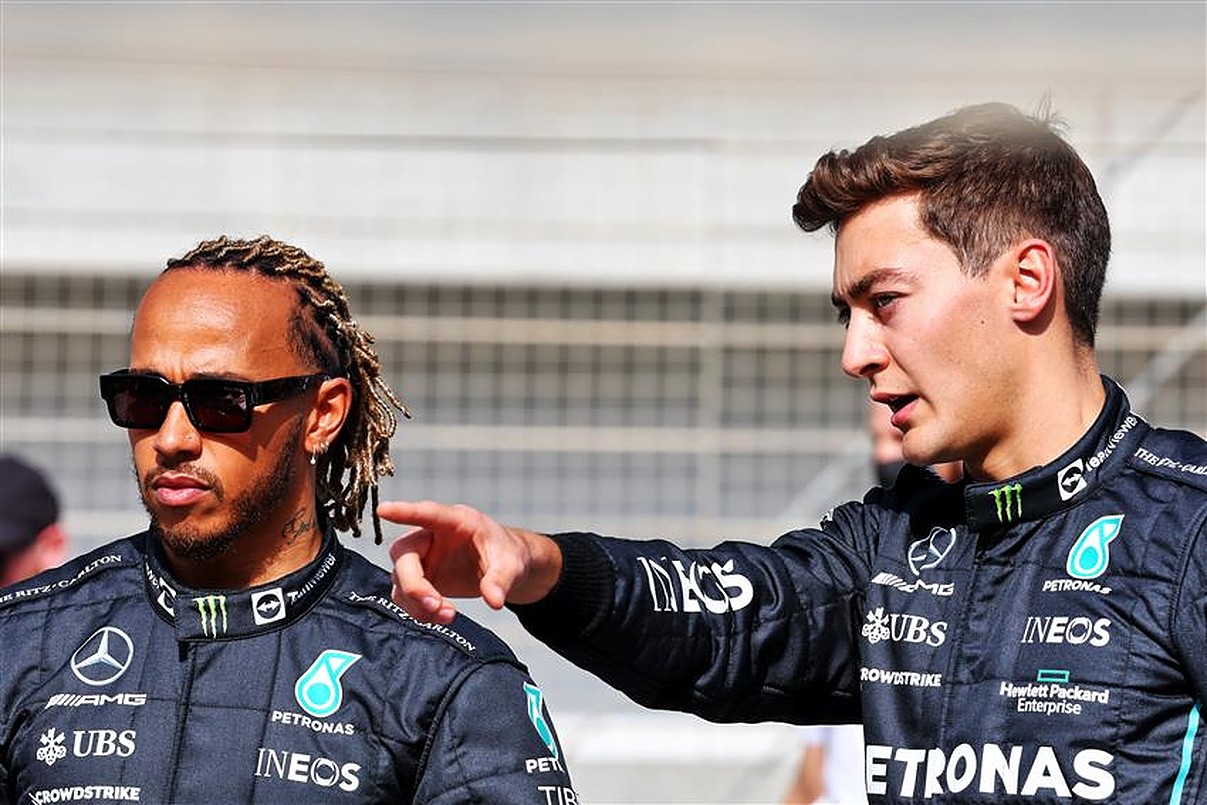Much has been made of Sir Lewis Hamilton’s poor performance at the Emilia Romagna Grand Prix, in which he failed to score a single point.
The Briton was out-qualified by his compatriot George Russell on Friday as neither Mercedes escaped Q2 for the first time since the Japanese Grand Prix in 2012, before he finished three positions behind the 24-year-old in P14 in a sprint race that Russell labelled “processional” as they both struggled to make progress through the field.
Progress was not an issue for the former Williams driver in the main race though, and he finished an exceptional P4, just ahead of Alfa Romeo’s Valtteri Bottas.
READ: ‘This was a terrible race’: Wolff reacts to Hamilton’s nightmare grand prix
This was despite the team forgetting to adjust the flap on his front wing during the transition from intermediate to slick tyres, which will have cost him significant time according to team boss Toto Wolff.
“George really drove well considering the car that he had underneath him,” he told Sky Sports F1.
“We missed on adjusting his front flap. That means he had a car that was set up for wet and not for dry and he held on well, really good drive.”
Meanwhile, the 37-year-old was stuck behind Pierre Gasly and Alex Albon for the majority of the afternoon as he ended down in P13.
An interesting aspect of the disparity between the Mercedes pair is that of the sensors. Mercedes removed them from Hamilton’s car in Saudi Arabia to try and save weight – they are thought to be around 15kg over the 798kg limit – but found that the lack of data needed to try and develop the car was doing them more harm them good, so they put them back on ahead of the race in Melbourne.
Chief strategist James Vowles conceded that it was “painful” to add weight to an already excessive heavy car, but they need the crucial information if they are to improve their wavering form in 2022.
“It was painful, because taking sensors off the car because the car is too heavy means we are losing out on information, and what we concluded from the first two races is we had too many questions without answers as a result of doing so,” he said in a Mercedes YouTube video after the Australian Grand Prix.
“In a normal year, you wouldn’t even consider not having sensors on the car. You would add what you need to, to make sure you understand what’s going on. But obviously this isn’t a normal year and the car is overweight.”
Vowles revealed that there are various components that weigh different amounts between the cars, and praised Hamilton’s pace despite having the heavier and, therefore presumably, slightly slower car.
“In terms of how it worked between the two cars, there are thousands of components that make up the racing car for George and for Lewis,” he explained.
“And those components don’t weigh exactly the same amount, there is variability of a few grams here and there and the actual car weight as mentioned on the FIA scales between the two cars in the race was within a few grams of each other, so Lewis did a fantastic job by carrying these extra sensors.
“Ultimately, the cost was small, it was a matter of grams between the two, which is what we wanted.”
READ: Hamilton’s struggles compared to Vettel’s Ferrari woes after torrid race
It has to be noted though that when the seven-time champion ran lighter in Jeddah, he was still slower than Russell.
He declared that he changed his set-up ahead of qualifying, but it is difficult to see how that constitutes the eight-tenth deficit he had to his team-mate as he was eliminated from the first qualifying session.
Interestingly, he was then marginally faster than Russell in Melbourne, but a Safety Car helped the young Briton clear his compatriot and finish on the podium.
It would therefore appear as though the fluctuation in weight, while naturally having a slight impact, is not the determining factor in the simple fact that, in two of the opening four rounds of the season, Russell has been quicker than Hamilton, and vice versa in the other two. After all, Hamilton qualified a second faster than Russell in Bahrain.
So any allegations that Mercedes intentionally gave Russell a quicker car in Imola can fairly comprehensively be dismissed, especially since the question of sensors was not even brought up by anyone at Mercedes in the aftermath of the race in Bologna.

